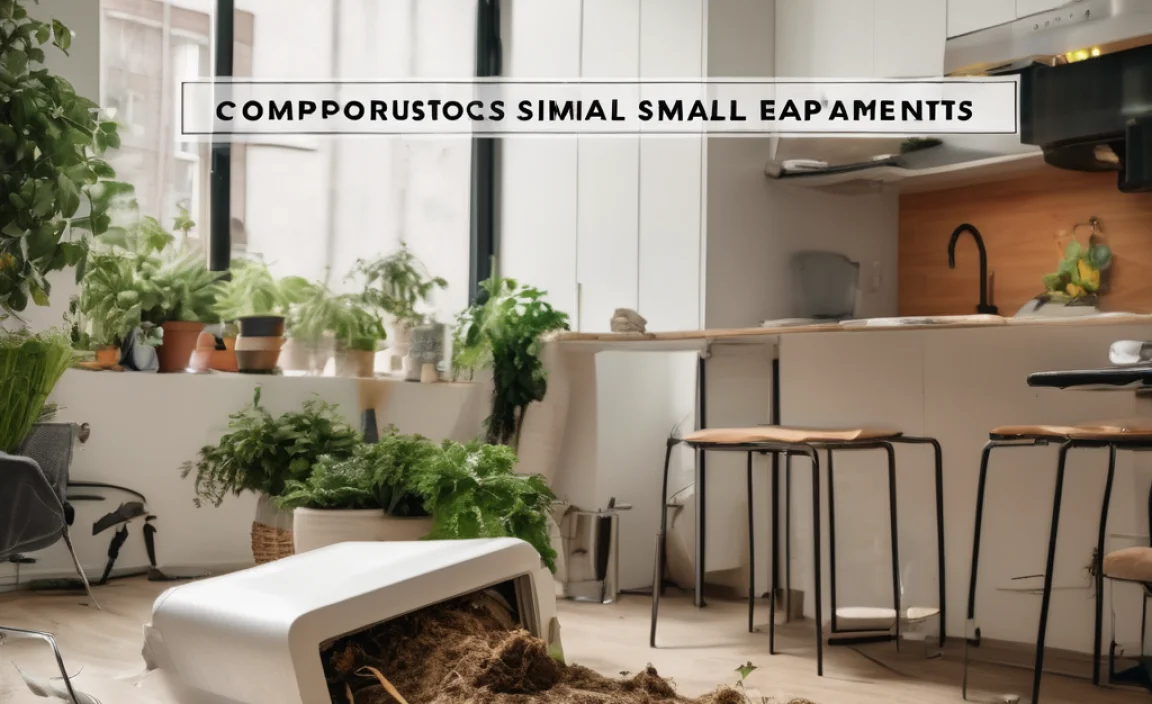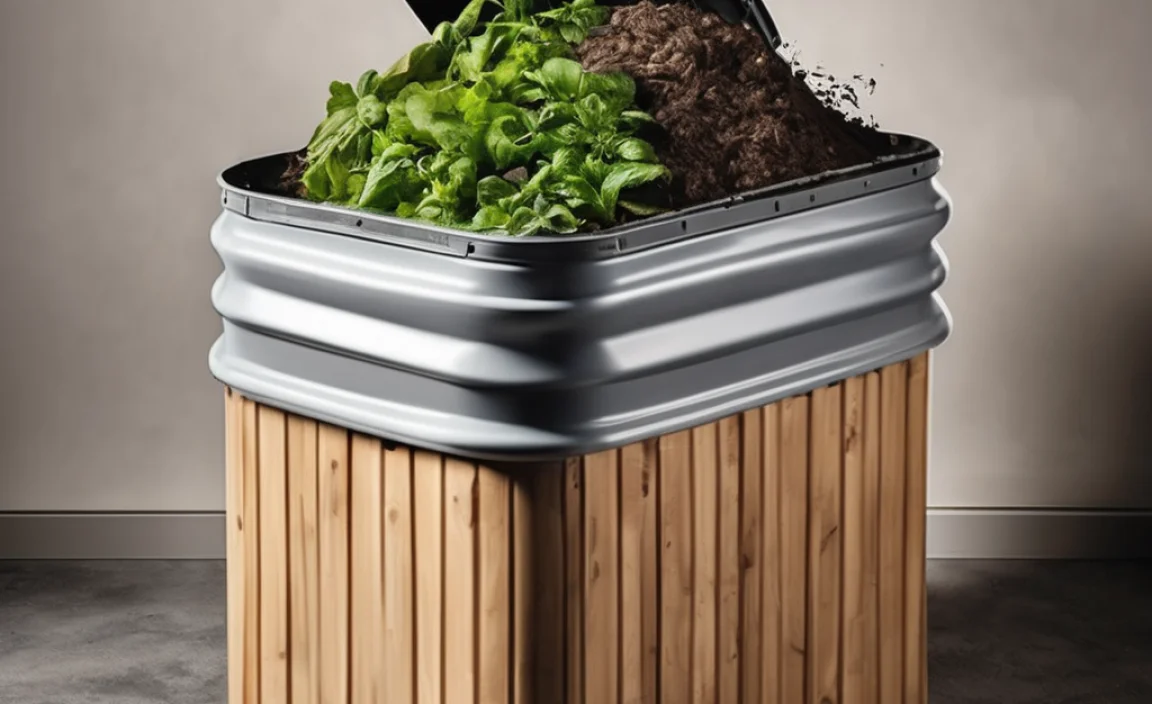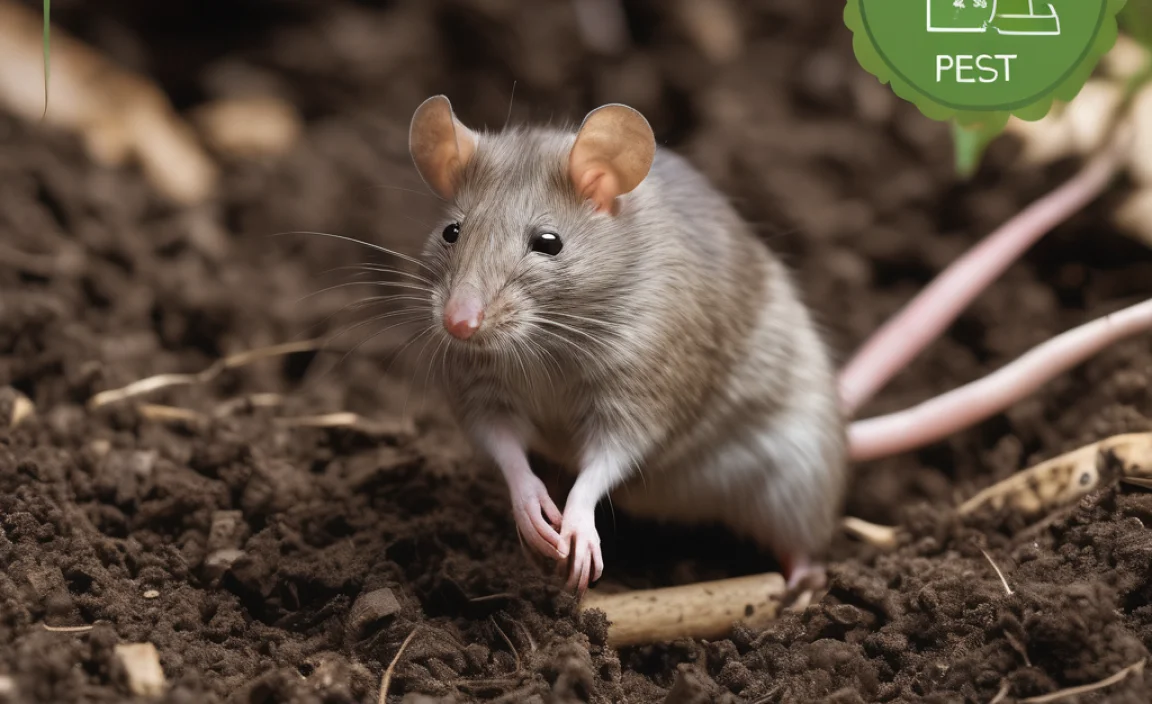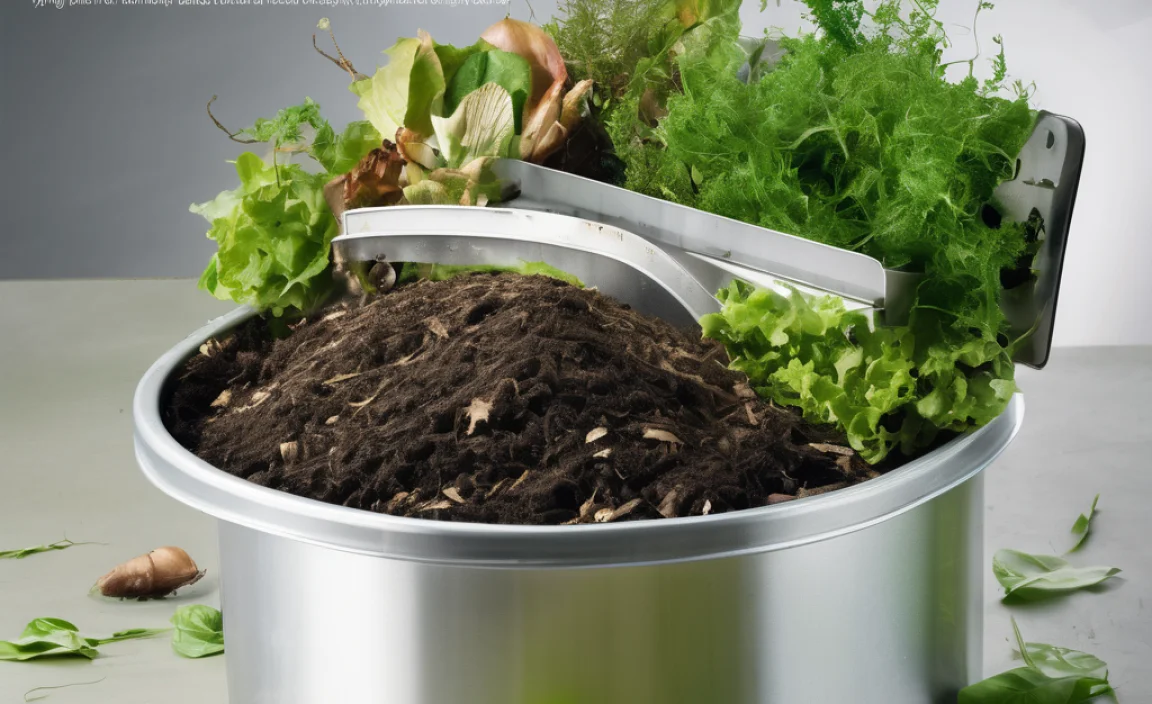Got sad-looking houseplants or struggling potted veggies? It’s a tale as old as time for plant parents! Sometimes, the soil in pots just runs out of good stuff. But don’t worry, giving your plants a healthy boost is easier than you think. We’re going to dive into using compost for your potted pals. It’s like giving them a superfood smoothie! Stick around, and I’ll show you exactly how to make it happen, step-by-step.
Compost for Potted Plants: Your Green Thumb’s Best Friend
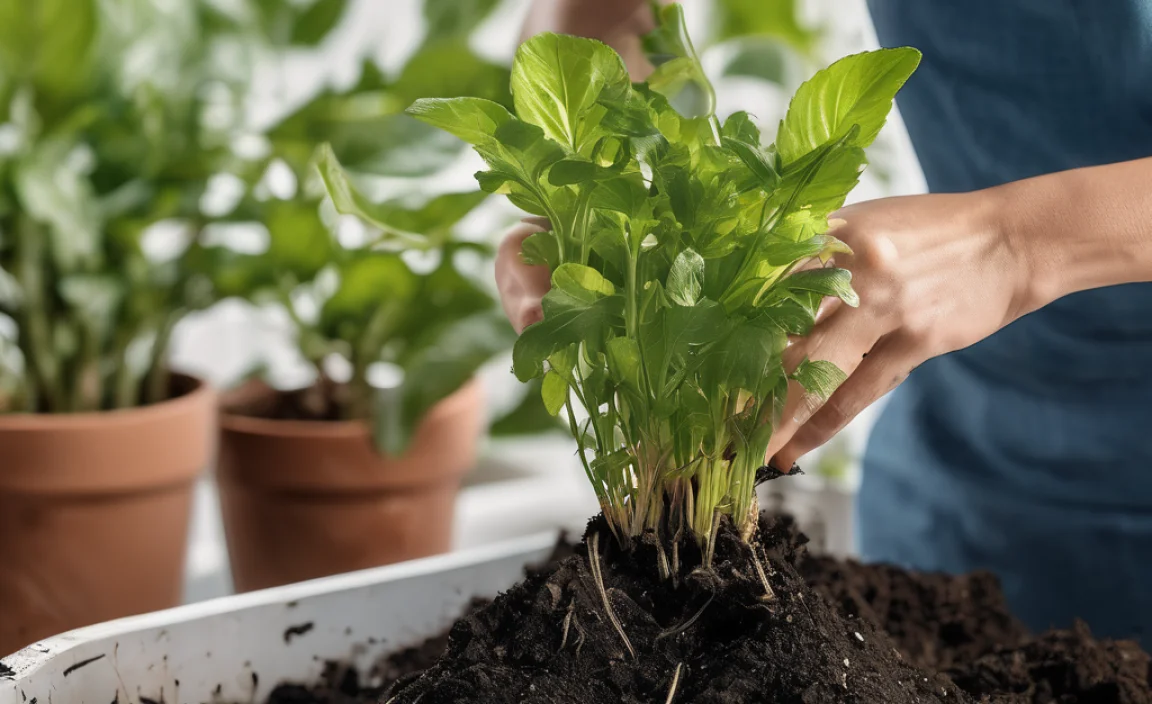
Hey there, fellow plant enthusiasts! It’s Troy D Harn with TopChooser, and today we’re talking about something that can truly transform your container gardens and houseplants: compost. If you’ve ever felt a little stuck trying to keep your potted plants thriving, you’re in the right place. I get it – sometimes those store-bought potting mixes can seem a bit… well, lackluster after a while. Or maybe you’re just curious about giving your plants the very best, naturally.
Compost is nature’s way of recycling, and it’s incredibly beneficial for your plants. Think of it as the ultimate soil builder. It improves soil structure, adds vital nutrients, and helps your plants retain moisture. For container plants, which can have their soil dry out faster and nutrients get depleted more quickly than in-ground gardens, compost is a total game-changer. It’s not just about making things grow; it’s about making them grow healthier and stronger.
For years, I’ve seen the difference good compost makes, and I’m here to share that knowledge with you. We’ll break down exactly why compost is so great for potted plants, what to look for, and most importantly, how to introduce it into your plant’s life without any fuss or confusion. My goal is to make this super simple, so by the end of this guide, you’ll feel completely confident in using compost to give your potted plants the vibrant life they deserve. Let’s dig in!
Why Compost is a Superstar for Potted Plants
So, why all the fuss about compost for plants living in pots? It boils down to a few superpowers that compost brings to the table, especially when compared to regular potting soil alone:
- Nutrient Powerhouse: Compost is packed with essential macro and micronutrients that plants need to grow big and strong. Unlike synthetic fertilizers that can wash away quickly, the nutrients in compost are released slowly, providing a steady food source for your plant’s roots. This is crucial for potted plants, which can’t stretch their roots out to find more food like their in-ground counterparts.
- Soil Structure Improvement: Good soil needs to drain well but also hold moisture. Compost helps achieve this balance. For clay-heavy soils, it loosens them up for better drainage and aeration. For sandy soils, it helps them retain water and nutrients. In pots, this means your plant’s roots get the air they need while still having access to water.
- Beneficial Microbes Galore: Healthy soil is alive! Compost is teeming with beneficial bacteria, fungi, and other microorganisms. These tiny helpers make nutrients more available to your plants, suppress soil-borne diseases, and improve overall soil health. It’s like a natural immune system boost for your plant.
- Water Retention Magic: Potted plants can be thirsty! Compost acts like a sponge, holding onto moisture and releasing it slowly as your plants need it. This means you might water less often, and your plants will be more resilient during hot spells.
- pH Buffer: Compost can help stabilize the pH of your potting mix, making it more neutral. This ideal pH range allows plants to absorb nutrients more efficiently.
What Kind of Compost Should You Use for Potted Plants?
Not all compost is created equal, especially when it comes to giving it to your precious potted plants. You want something that’s fully mature and ready to go to work. Here’s what to look for:
Homemade Compost
If you’re making your own compost (and I highly recommend it if you have the space and inclination!), you want to make sure it’s completely finished. This means it should be dark, crumbly, and smell earthy – like a forest floor after rain. You shouldn’t be able to recognize the original ingredients (like food scraps or yard waste). Here’s a quick rundown of what makes good compost:
- Appearance: Dark brown or black, crumbly texture.
- Smell: Earthy and pleasant. If it smells sour, ammonia-like, or rotten, it’s not ready.
- Temperature: Finished compost should be at ambient temperature, not hot. Hot compost indicates active decomposition, which isn’t ideal for immediate use in pots as it can harm roots.
If you’re new to composting, check out resources from your local extension office. For example, the Oregon State University Extension offers great guides on home composting.
Store-Bought Compost
When buying compost, look for terms like “screened compost,” “organic compost,” or “worm castings.” Avoid anything labeled just “soil amendment” or “topsoil,” as these might not be fully composted or could contain unwanted materials. Here are some store-bought options and what to know:
- High-Quality bagged compost: Many garden centers sell bags of compost. Look for reputable brands and check the ingredients if possible.
- Worm Castings (Vermicompost): This is worm manure, and it’s incredibly nutrient-rich and beneficial. It’s often sold in small bags and is perfect for adding to potting mixes or as a top-dressing. It’s gentle enough for even the most delicate seedlings.
- Mushroom Compost: This is composted manure and straw left over from mushroom farming. It’s generally nutrient-rich but can sometimes be a bit alkaline, so it’s good to mix it with other materials.
What to Avoid:
- Fresh Manure: This is too “hot” and can burn plant roots. It needs to be aged or composted first.
- Compost with obvious plastic or foreign objects: Always give bagged compost a quick visual check.
- Compost that smells bad: A foul odor is a sign of anaerobic decomposition (lack of air) and can be harmful to plants.
How to Use Compost in Your Potted Plants: Step-by-Step
Alright, let’s get down to business! Using compost in pots is all about finding the right balance. You don’t want to just fill a pot with 100% compost, as it can sometimes be too rich or hold too much water. Here are a few proven ways to incorporate it:
Method 1: Mixing Compost into New Potting Mix
This is the most common and effective way to use compost for repotting or starting new plants. It ensures your plants get a great foundation from the start.
- Gather Your Supplies:
- New potting mix (a good quality one, but you can improve it!)
- Finished, mature compost
- A clean tub, wheelbarrow, or tarp for mixing
- Gloves (optional, but recommended)
- Determine Your Ratio: A good starting point for most potted plants is a mix of 25-30% compost to 70-75% potting mix. For fussier plants or seedlings, you might start with a bit less compost, around 10-20%.Example Ratio: For a 10-liter bag of potting mix, you’d add about 2.5 to 3 liters of compost.
- Measure and Combine: Measure out your potting mix and compost. Pour them into your mixing container.
- Mix Thoroughly: Use your hands (with gloves) or a trowel to mix everything together really well. You want to ensure the compost is evenly distributed throughout the potting mix. Break up any clumps of compost.
- Pot Your Plants: Use your new, enriched potting mix to pot up your plants as you normally would. Make sure the soil settles around the roots, then water well.
Method 2: Top-Dressing with Compost
This is a fantastic way to add a nutrient boost to plants you already have in pots, especially during the growing season. It’s simple and gives plants a gentle feeding.
- Choose Your Compost: For top-dressing, finer compost like worm castings or very well-sifted compost works best so it doesn’t interfere with watering.
- Gently Remove Surface Material (Optional but Recommended): If the top layer of your current potting soil is compacted or old-looking, you can gently scrape off about an inch. This helps the new compost make better contact with the soil.
- Apply a Layer of Compost: Spread a layer of compost (about 1/2 inch to 1 inch thick) over the surface of the soil in the pot. Keep the compost a little bit away from the plant’s stem to prevent rot.
- Water It In: Water the pot thoroughly. This helps the compost settle and start releasing its nutrients into the soil below.
- Frequency: You can do this every 4-6 weeks during the growing season (spring and summer) for most plants.
Method 3: Compost Tea (for the Adventurous!)
Compost tea is a liquid fertilizer made by steeping compost in water. It’s a fantastic way to deliver soluble nutrients and beneficial microbes directly to the plant’s roots and leaves. It is a bit more involved but very rewarding.
- Gather Supplies:
- A bucket (5-gallon works well)
- Water (dechlorinated is best – let tap water sit out for 24 hours)
- Finished compost (about 1-2 cups per gallon of water)
- A porous bag (like a old pillowcase or mesh bag) for the compost
- Optional: An aquarium air pump and airstone for aeration
- Brewing (Simple Method):
- Fill your bucket with water.
- Place your compost in the porous bag and tie it securely.
- Submerge the bag of compost into the water.
- Let it steep for 24-48 hours, stirring occasionally. For a “brewed” compost tea (more beneficial microbes), add the air pump and airstone and let it bubble for 24-36 hours.
- Dilute and Apply: Strain the liquid if needed. Dilute the compost tea with more water until it’s the color of weak tea.
- Water Your Plants: Use the diluted compost tea to water your potted plants as you normally would. You can also spray it on the leaves (foliar feeding), but be sure to test on a small area first.
Note: Compost tea is best used fresh, within a few hours of brewing (especially if aerated).
Compost Ratios for Different Potted Plants
Different plants have different needs, and the amount of compost you use can be adjusted. Here’s a simple guide:
| Plant Type | Compost Ratio (% of mix) | Notes |
|---|---|---|
| Vegetables (tomatoes, peppers, leafy greens) | 25-35% | Love the nutrients for good growth and fruiting. |
| Herbs (basil, mint, parsley) | 20-30% | Provides steady feeding without being too rich. |
| Flowering Annuals/Perennials | 20-25% | Supports good bloom production. |
| Succulents and Cacti | 10-15% | Need excellent drainage; compost adds nutrients without holding too much moisture. Use coarse compost or mix with sand/perlite. |
| Houseplants (general) | 20-25% | A good all-around blend for most indoor plants. |
| Seedlings and Cuttings | 10-20% | Use finer compost or worm castings. Too much can be overwhelming for young plants. |
Tips for Success with Compost in Pots
Here are a few extra bits of advice to help you and your potted plants enjoy the benefits of compost:
- Start Small: If you’re new to using compost or making your own, start with a smaller batch or a lower ratio to see how your plants react.
- Quality Over Quantity: Always use well-finished, mature compost. Hot or unfinished compost can harm your plants.
- Don’t Over-Rely on Compost Alone: While compost is amazing, it might not provide every single micronutrient your plant needs over its entire life cycle, especially in a small pot. Supplementing with a balanced organic fertilizer occasionally can be beneficial, especially for heavy feeders.
- Watch for Over-watering: Even with improved drainage, compost can increase water retention. Be mindful of your watering schedule and always check the soil moisture before watering. Stick your finger about an inch or two into the soil – if it feels moist, wait to water.
- Keep it Away from the Stem: When top-dressing, always leave a small gap between the compost and the plant’s stem. This simple step helps prevent moisture buildup around the stem, which can lead to rot.
- Screen Your Compost: If your homemade compost has larger chunks, screening it through a simple hardware cloth can give you a finer, more uniform texture that’s ideal for potting mixes.
- Consider pH: Most mature compost has a neutral pH, but some types (like mushroom compost) can be slightly alkaline. If you’re growing acid-loving plants (like blueberries or azaleas in pots), you might want to test your compost’s pH or blend it with acidic amendments like peat moss or coco coir. For most common houseplants and veggies, a neutral pH is perfect.
Common Problems and How to Solve Them
Even with the best intentions, sometimes things don’t go perfectly. Here are a few common hiccups when using compost for potted plants and how to fix them:
Problem 1: Plants look burnt or yellowed after adding compost.
Likely Cause: You used compost that was too “hot” (not fully finished) or a too-high concentration of compost. Fresh compost can contain high levels of ammonia or salts that can damage roots.
Solution: Water the plant thoroughly to help leach out excess salts and ammonia. In severe cases, you may need to repot the plant using a less concentrated mix of fresh potting soil and a smaller amount of compost, or even pure potting mix for a while.
Problem 2: Soil stays too wet, leading to root rot.
Likely Cause: The compost you’re using holds a lot of moisture, or you’ve used too much compost relative to the other potting mix components, hindering drainage.
Solution: Ensure your potting mix has good drainage ingredients like perlite or vermiculite. If you’ve already mixed it, you can try to improve drainage by adding more perlite or coarse sand. For severely waterlogged pots, consider repotting with a better-draining mix. Adjust your watering schedule to account for the increased water retention.
Problem 3: Despite adding compost, plants aren’t growing vigorously.
Likely Cause: The compost might be old and its nutrients have depleted, or it’s not the right type of compost for the plant’s needs.
Solution: Try a different, fresher source of compost or worm castings. For heavy feeders, you might need to supplement with an organic fertilizer designed for potted plants, following the product’s instructions. Over time, even good compost’s benefits can diminish, so regular top-dressing or repotting is key. For more on nutrient needs, check out guides from institutions like the Royal Horticultural Society (RHS), which offers insights into compost properties.
Problem 4: Fungus gnats or other pests appear.
Likely Cause: Compost, especially if not fully finished or if some of the original ingredients were particularly attractive to pests, can sometimes introduce these unwelcome guests. Overwatering also encourages

I am passionate about home engineering. I specialize in designing, installing, and maintaining heating, ventilation, and air conditioning systems. My goal is to help people stay comfortable in their homes all year long.

